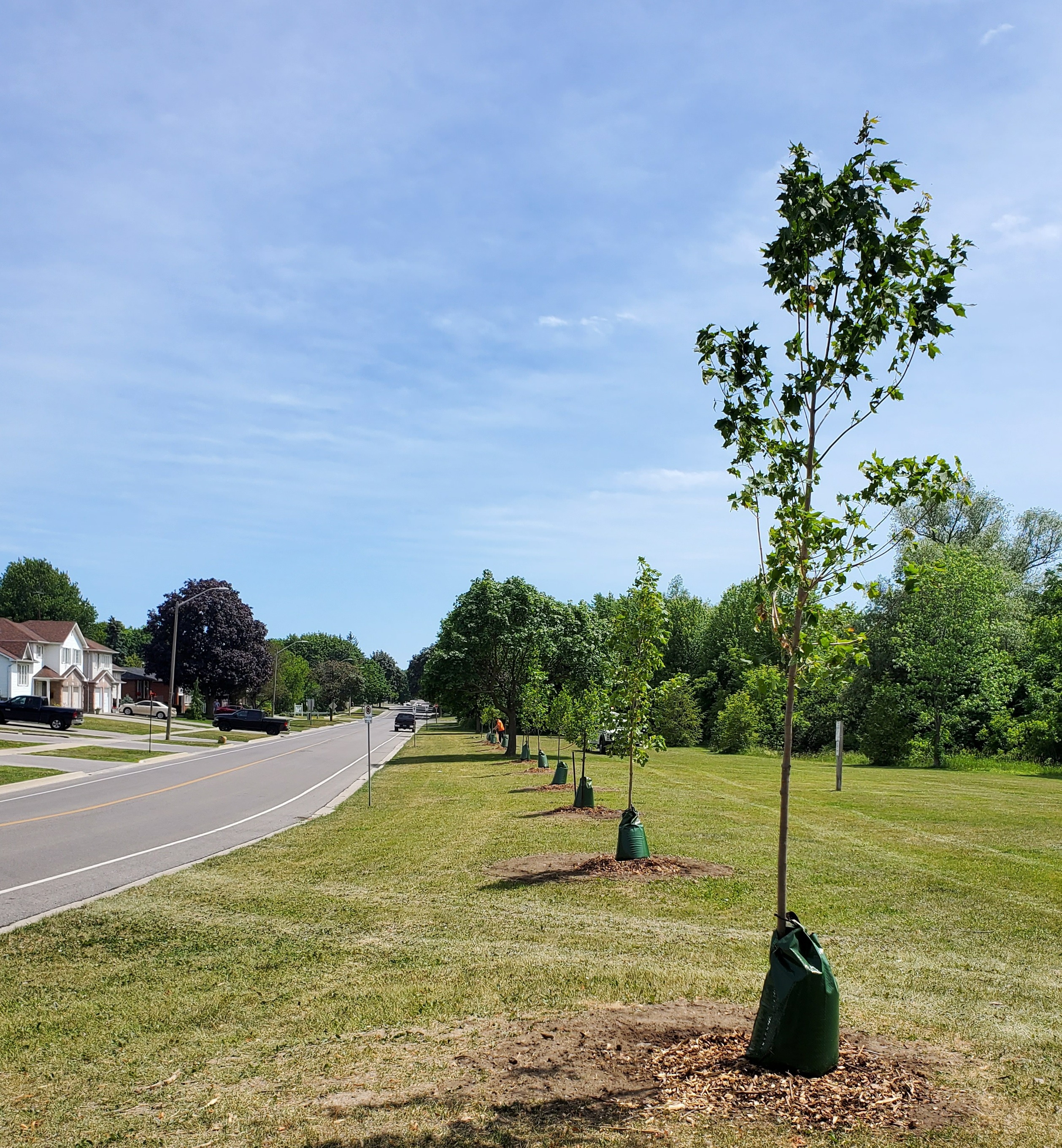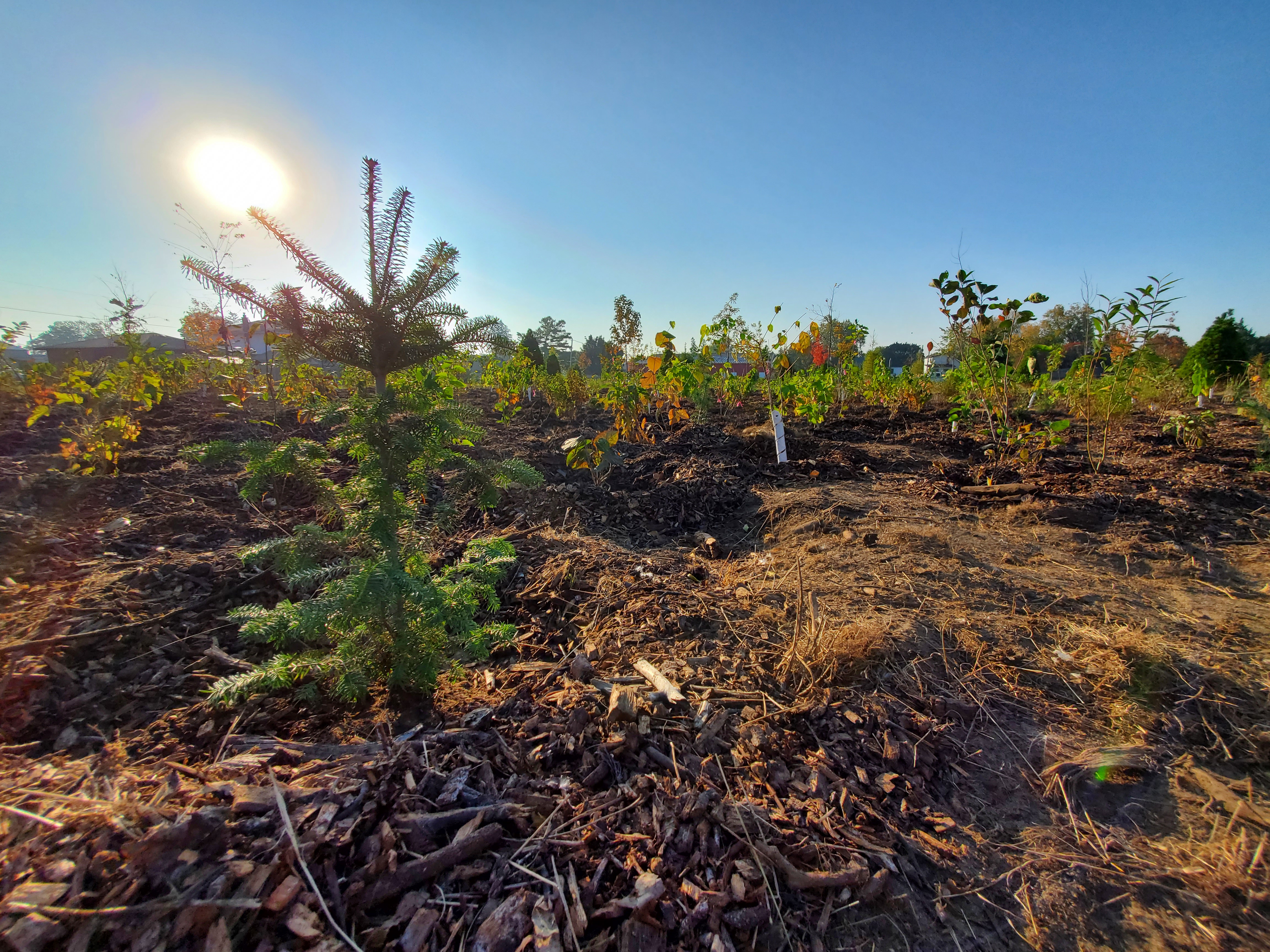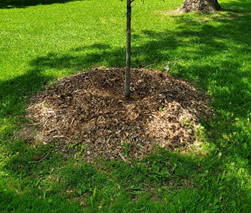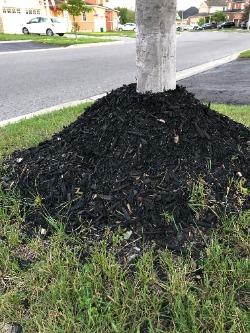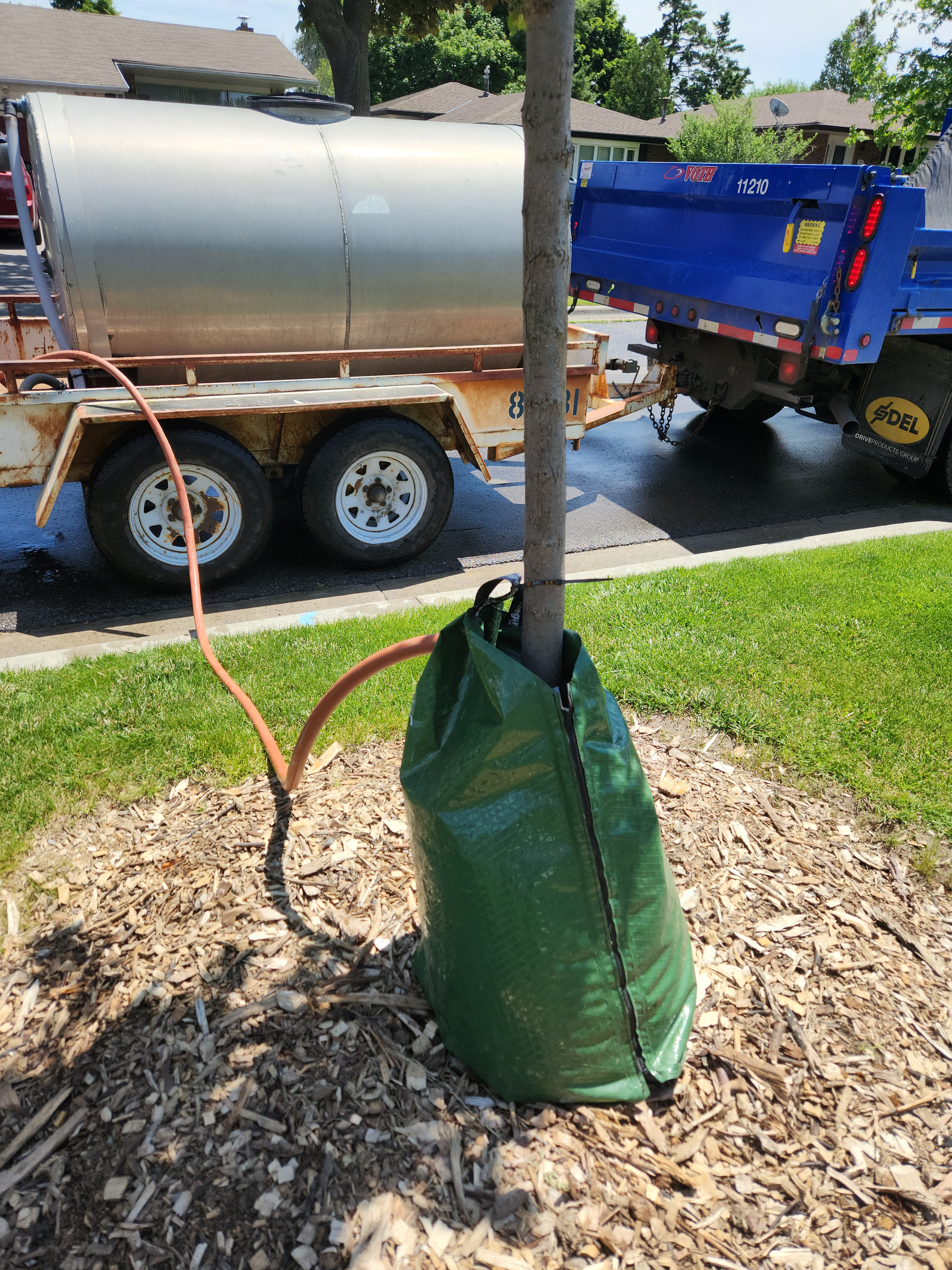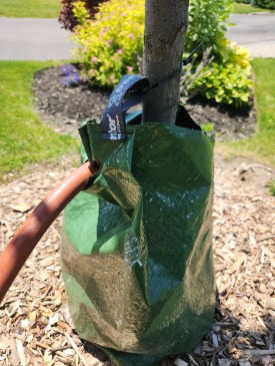Tree Planting
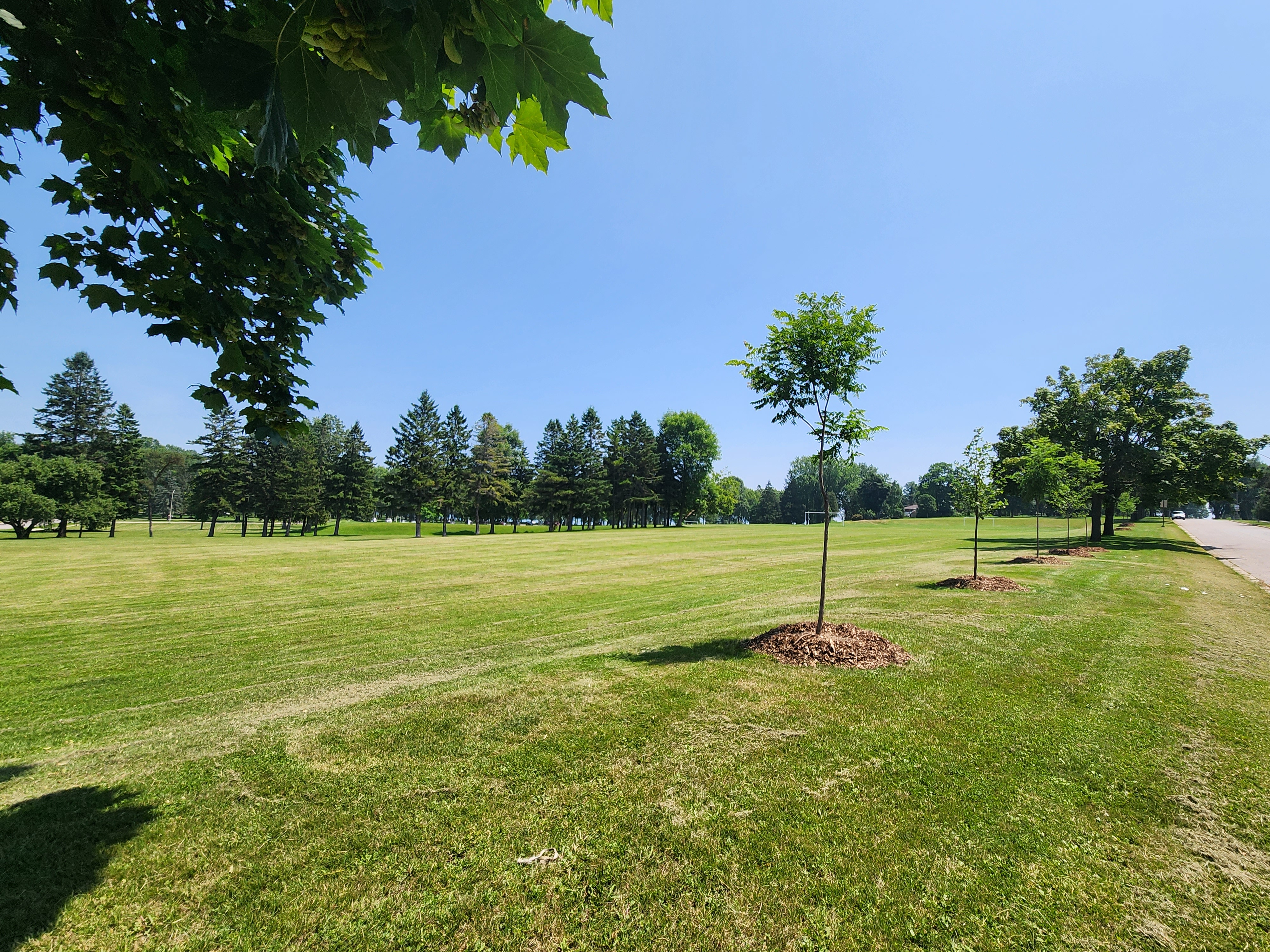
Spring stump removal and planting will begin in May, 2025. If you would like a new boulevard tree for the 2025 season, please create a service request today.
New trees
Boulevard tree
New requests or boulevard tree replacements will be planted from May to December (or weather permitting). If your boulevard has a stump from a recent tree removal, it is placed on our replacement list.
You may request for a new tree to be planted if you have an empty boulevard space that may need a tree. The request will be reviewed and it will be determined whether one can be planted.
New subdivision
In new subdivisions, the developer is responsible for the planting and maintenance of boulevard, parks and open space trees. After a certain period, the City assumes the responsibility for these trees.
Current Planting Projects
|
Boulevard planting |
|
This program focuses on replacing boulevard trees in the spring and fall seasons. You may notice markings or flags on the boulevard stump once the locate request is completed. The stump removal and/or tree planting will occur shortly after, and the boulevard area will be restored. Spring Planting is set to commence in May, 2025. Stump grinding and replacement planting will begin in spring throughout the City and will be completed by our contractor. If you have a tree removed before February 28th, 2025, you should receive your new tree by end of spring planting. If it is removed after this date, it will be placed on the fall planting list for replacement. Please Note: If you are unsure if you are on the planting list, or want to request a new tree, please contact Service Oshawa. |
|
Russett Park Woodlot Restoration |
|
Since 2018, the woodlot had experienced a steady decline because of Pine Wilt. Staff had responded to numerous service calls, including uprooted or fallen trees due to declining health, resulting in more than 100 tree removals. The trees posed a significant risk to park users and adjacent properties. To address concerns, the City undertook large-scale removal of the woodlot in late November 2021. In 2022, 150 large caliper trees were planted to begin restoration efforts in this space. The woodlot will see a wide variety of native species planted throughout and create a more sustainable urban forest for the future. Ongoing RestorationThis has provided the City with a unique opportunity to increase biodiversity and resiliency. Scots pine is not native to Canada will take over an area by shading out native plant species, reducing biodiversity and habitat. Restoration has included help from City staff, LEAF and volunteers. Over 1600 trees and shrubs have been planted to date and the area will continue to be planted and monitored by the City to ensure its success. Restoration will increase biodiversity, creating a more resilient forest. This will allow the woodlot to withstand the impacts of climate change, severe weather and damage caused by diseases and invasive species. The restoration process is ongoing so remember to visit LEAF for more information future events both here and around the City of Oshawa.
|
|
Colonel Sam Dr. |
|
Emerald Ash Borer has heavily affected Colonel Sam Dr., and many boulevard trees were removed due to disease and declining health. Restoration planting has concluded in this area and over 200 new trees have been planted with a focus on creating a more diverse canopy that is more resilient to pests and disease. |
Tree selection
Diversity is important for our urban canopy. A neighbourhood with one species of tree (monoculture planting) could mean the total removal of the canopy if faced with a new pest or disease. Planting multiple species of trees limits the loss of canopy and can even slow the spread of a pest or disease.
Over 50+ varieties of trees are planted on our streets and many more in our parks. Our focus is to try and plant native, pest/disease tolerant species, as well as trees that are adaptable to harsh urban environments.
Things we look for when selecting a tree:
- Root space for healthy growth now and in the future
- Mature canopy size
- Infrastructure (Hydrants, lights, overhead wires)
- Tree shape or form (Arching, Rounded, Low growing, Columnar)
- Competing trees that may affect a new tree's growth
- Potential sight line issues around intersections and schools
Caring for a new street tree
If you have a new tree on your boulevard or even on private property, you can help increase its chance of success. Follow these steps to take care of it.
|
Mulching |
||||
|
Your new tree is mulched in a “donut” or “ring” pattern. Mounding up or “volcano” mulching is harmful to a new tree. You can continue to apply fresh mulch to the tree over the root ball area to reduce the growth of weeds and retain water in the soil. Be sure to keep mulch approximately 10 cm away from the trunk of the tree. (Free mulch can be picked up at Oshawa Animal Services during the growing season. Avoid mounding the soil or creating a "volcano" of mulch around the base of the tree. Never cover or bury the trunk flare. Improper mulching can lead to:
City of Oshawa's Forestry Services recommends that only mulch and other organic material be used around City owned trees. Alterations around the base of the tree including the use of landscape rings, brick borders, and landscape fabrics can raise/alter the grade and natural environment surrounding the tree and affect the health and longevity of our urban canopy.
|
||||
|
Watering |
||||
|
City of Oshawa tree watering: Community members may notice a green bag around new trees in your neighbourhood. These bags are for watering our new tree plantings throughout the City. Both City staff and contractors will be out filling these bags to ensure new tree plantings on City boulevards receive adequate moisture. These water bags are designed to slowly release water in the root system to establish deep roots and keep soil moist for longer periods of time between watering. Your tree will periodically receive watering throughout the growing season but in times of drought or high heat, your new tree may require additional watering. Homeowners are encouraged, but not required to fill these bags. Keeping soil moist and your tree watered in times of high heat or drought will help the new tree establish and thrive in its new environment. If water is pooling around the tree or the soil is extremely wet after watering, then water less frequently. Using the water bag: The bag will be installed by City staff or by our contractor. If you would like to offset City watering in times of heat or drought by filling the bag you can easily do so by:
|
||||
|
Staking |
||||
|
Staking trees is not necessary but can sometimes be necessary if they are exposed to high winds; the soil is shallow, or the root ball is loose when planted. Trees need to develop strong support and reaction wood to stand up to high winds, storms and other environmental factors. If stakes are used, the city will remove them one to two years after planting. |
||||
|
Pruning |
||||
| Residents are not allowed to prune or otherwise alter any City tree By-law 63-2013. Tree maintenance is completed by the City on a ten-year cycle or by request. Submit any tree related requests to Service Oshawa or call 905-436-3311. | ||||
|
Grass Cutting |
||||
|
Keep lawn mowers and string trimmers away from the trunk, which can damage the tree and even kill it if the bark is removed around the tree. |


